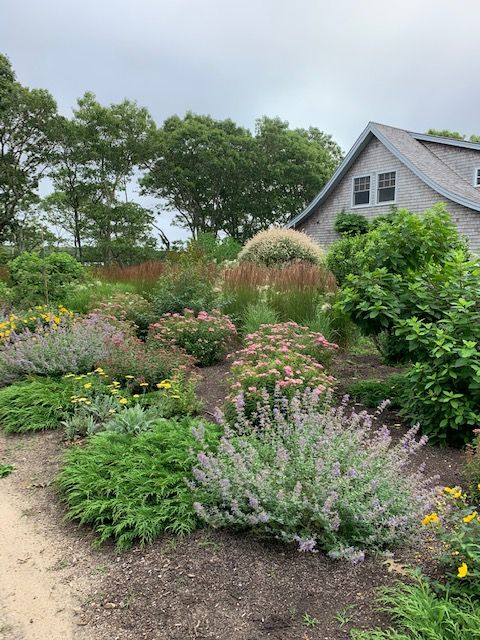Martha’s Vineyard is known to many of us as an idyllic, scenic retreat that showcases a rustic and coastal aura. This island has farmland, beaches, lighthouses as well as towns spread out alongside its harbor. A home in this part of the country conveys an atmosphere that is laid-back, relaxed, and peaceful.
To add to the appeal and charm of Martha’s Vineyard, special Martha’s Vineyard landscape architects here make the best of the rural ambiance and give your home garden an aesthetic look that is also practical at times. Following are some tips and tricks to make your landscape garden stand out from the rest, enrich the soil around your house, and also let you grow certain herbs and veggies just outside your kitchen window.
#1 Whatever you do, do it organically.
Some years prior to today, the traditional way of protecting and enriching the plants and foliage in your Martha’s Vineyard landscaped garden was to use pesticides and chemical fertilizers as much as one could. Then, people gradually started realizing the adverse effects of these on the soil, the water, and the environment as a whole. Not to mention their ill effects on fruits and vegetables thus grown.
Recently, organic methods of creating, developing, and maintaining a Martha’s Vineyard landscape garden have become more popular. This is the process where natural ingredients themselves are used to protect plants and greenery from pests and harmful insects.
As an example, the garlic plants, along with some herbs commonly used in your kitchen (mint, for instance), as also the sunflower and lavender – are plants that naturally repel insects and can also protect other plants close by. And lastly, you undertake garden practices that benefit all elements of your landscaped garden, including soil, taking both lawn maintenance and the care of plants into consideration.
#2 Plan beforehand
A little bit of planning and putting in some thought beforehand will do wonders for your Martha’s Vineyard landscaping when it is finally ready. It is always better to plan beforehand, whether it is deciding which plants to include, the overall look and feel of your garden, or even your budget. You need to study the soil and environmental conditions a little and then decide on what plants you wish to have in your garden. This could also be based on your personal preferences in terms of the usefulness or aesthetic appeal of plants. Lastly, having a budget means you don’t end up overspending.
#3 Include plants with naturally strong, extensive roots.
To the extent possible, include plants with medicinal benefits and those that naturally ward off pests. All plants in your Martha’s Vineyard landscaping should be those having naturally strong, extensive roots that can penetrate the soil deep within. Of course, your choice of vegetation in your garden is personal, but certain plants have unique benefits to humans as well as the soil. It is practical to have some medicinal plants in your garden, which would come in handy later on. Additionally, choosing those plants whose roots grow strong and deep will have soil conservation too.

#4 Use the right nutrients for your plants.
By now, you have decided on the look for your Martha’s Vineyard landscaped garden and what to plant in it. Ensure you use the correct nutrients for your plants – mulch, top dressing with compost made from plant and animal waste like cow dung. Mulch helps with soil erosion, retains the moisture within, and enriches the soil. Composting is a great source for providing the right nutrients to a growing sapling or a young plant.
#5 Pay attention to the hardscape elements.
Last but not least, there is also the matter of hardscapes or the nonliving structures in your landscaped garden. You might have concrete pavements, metal or ceramic structures or sculptures, and other such items. These also would need regular cleaning, maybe polishing, and similar ways of maintenance too.
Together, all the above steps will guide you in obtaining your version of a Martha’s Vineyard landscaped garden. Not only will it be pleasing to the eye, but it will aid in purifying your surroundings. Contact Tea Lane Nursery to learn more.




